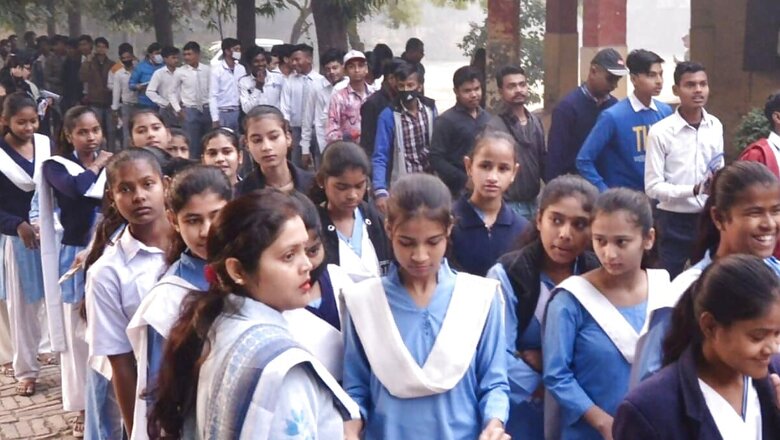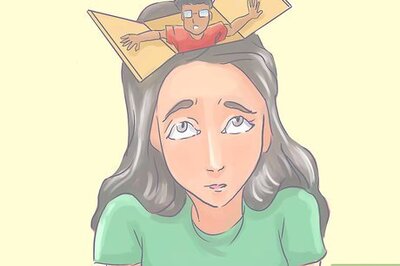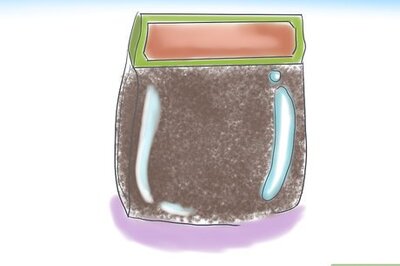
views
From teaching maths, science, social sciences and arts through ancient Indian concepts such as ‘Panchtantra’ stories and ‘Aryabhata’s numeric system’ to expanding digital outreach, the new draft National Curriculum Framework (NCF) has outlined some of the major changes to overhaul the education system in schools, and which are likely to be implemented from the 2024-25 academic session.
The draft NCF document (for 3-18 years) for school education developed by a team of experts led by former ISRO chairperson K Kasturirangan was put in public domain last week for inviting feedback.
“Rooted in India”, as the draft document puts it, stresses learning about India and situating learning in the child’s context, both local and national, as an integral part of education across all school stages.
Once the NCF is notified, school textbooks, syllabi as well as teaching-learning practices and assessment methods for all classes will undergo a major change from the education structure and curriculum being taught at present.
While all these changes will apply to all Central Board of Secondary Education (CBSE-affiliated) schools across the country, states have been advised by the Centre to adopt the recommendations of the new framework in their own context, as education is a state subject.
Revised textbooks based on the guidelines made in the new NCF document are likely to be launched by the 2024-25 academic session, a top official in the education ministry said. These books will also be available digitally, the official added.
At the Foundational Stage, the draft suggests, the child’s own context is seen as the best source of learning. Stories, music, arts, games, from the local context are part of content used for teaching.
“Learning the value of Seva is one of the curricular goals at this stage. Children are given the opportunity to read and learn from the original stories of the Panchatantra, Jataka, Hitopadesha, and other fun fables and inspiring tales from the Indian tradition. Stories from the lives of great Indian heroes of history are also seen as an excellent way to inspire and introduce core values in children,” the document said.
The new framework has been developed in line with the National Education Policy (NEP) 2020, which emphasises on introduction of concepts from Indian Knowledge System (IKS) in formal education.
“The approach to Art education in the NCF draws from ancient Indian texts like the —Natyashastra, Abhinaya Darpanam, Shilpashastra, Vaastushastra, and Chitrasutra — which have codified and structured the elements, methods, and aesthetic principles of the arts,” the document stated.
Through different stages, students will develop knowledge of these elements and principles and a vocabulary of the arts used to describe and discuss artworks and their processes. “For example, sruti, naada, raaga, taala, laya, bhaava, alankaar, nritta, natya, pramaana, saahitya, gamak, meend, rasa,” it said.
For teaching core subjects like mathematics, the draft further said, at the preparatory stage, students will be introduced to major contributions made by Indian mathematicians in numeration systems. Student at the middle stage will be able to understand how concepts evolved over a period in different civilisations and the contributions of specific Indian mathematicians — Baudhayana, Panini, Pingala, Aryabhata, Brahmagupta, Virahanka, Bhaskara, Madhava, and Ramanujan.
Similarly, for social science, one of the key curricular goals for students has been defined as one where they “appreciate the importance of being an Indian (Bhartiya)”.
For subjects such as physical education, the document recommends that the approach is to make Indian games (including physical activities) such as yoga, water sports, wrestling, malkhamb, archery, chariot racing, bullock racing, polo, dice games and hide and seek, among others, an integral part of the curriculum across stages.
“The chapter on Physical Education explicitly outlines more than 50 local games to be used across school stages,” the document said.
The Digital Push
The draft put emphasis on expanding digital learning modes and availability of all textbooks and reading material for studying online so that even those who could not access physical modes of learning can be made to benefit from it.
“With the spreading network access to the internet and the ubiquity of digital devices that can connect to the internet, access to educationally valuable content has become more equitable and democratised… Teachers can use digital content for supplementing the textbook material. Such content can enable different pedagogical approaches as well as provide different forms of engagement through audio-visual material,” it stated.
Also, generative AI technologies can be used by teachers to create content that is localised to their contexts. Digital textbooks can have assessments embedded in them and students can check their understanding immediately. Digital books would be relevant across all subjects including vocational training,” the draft suggested.
Read all the Latest Education News here




















Comments
0 comment